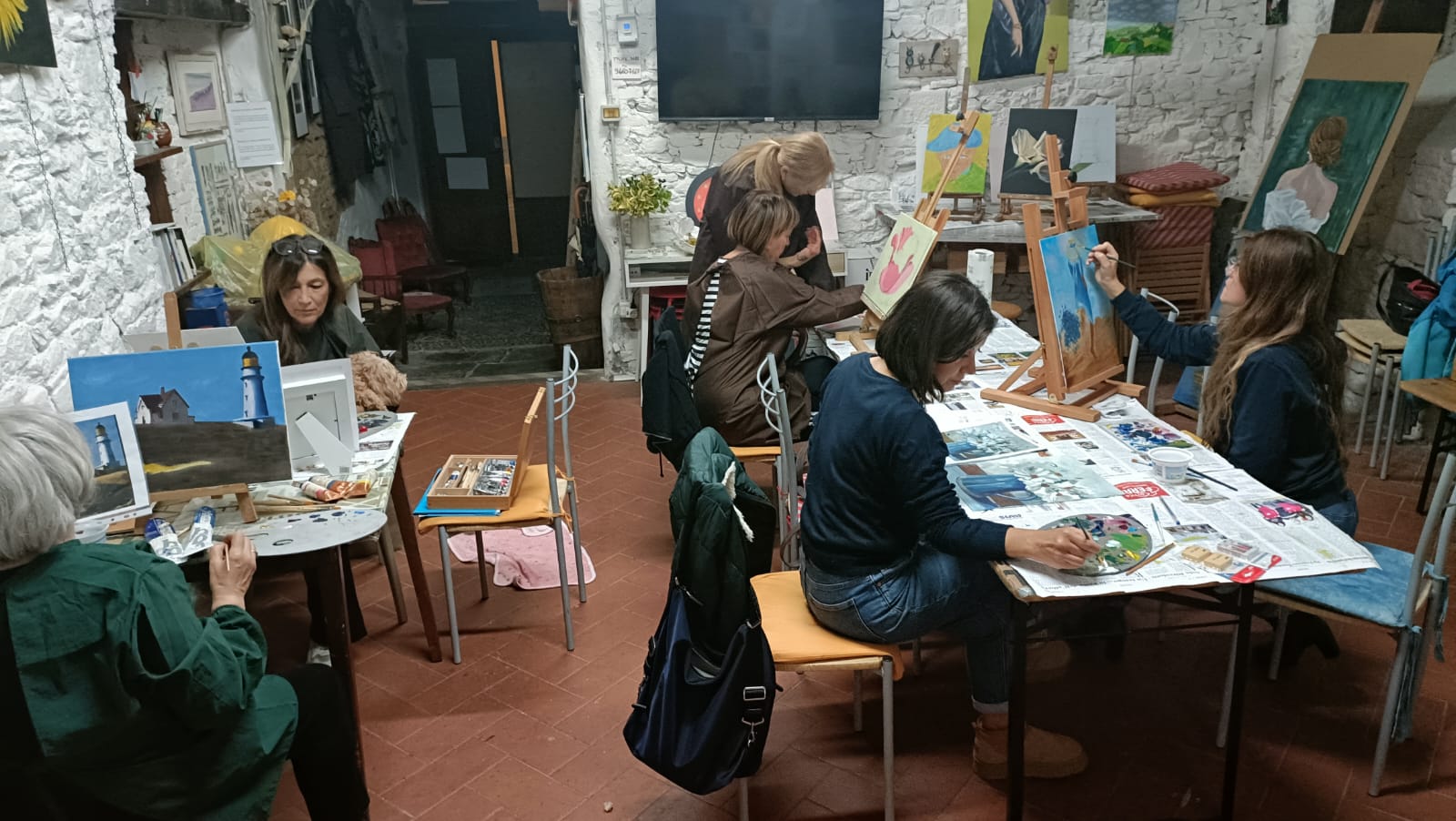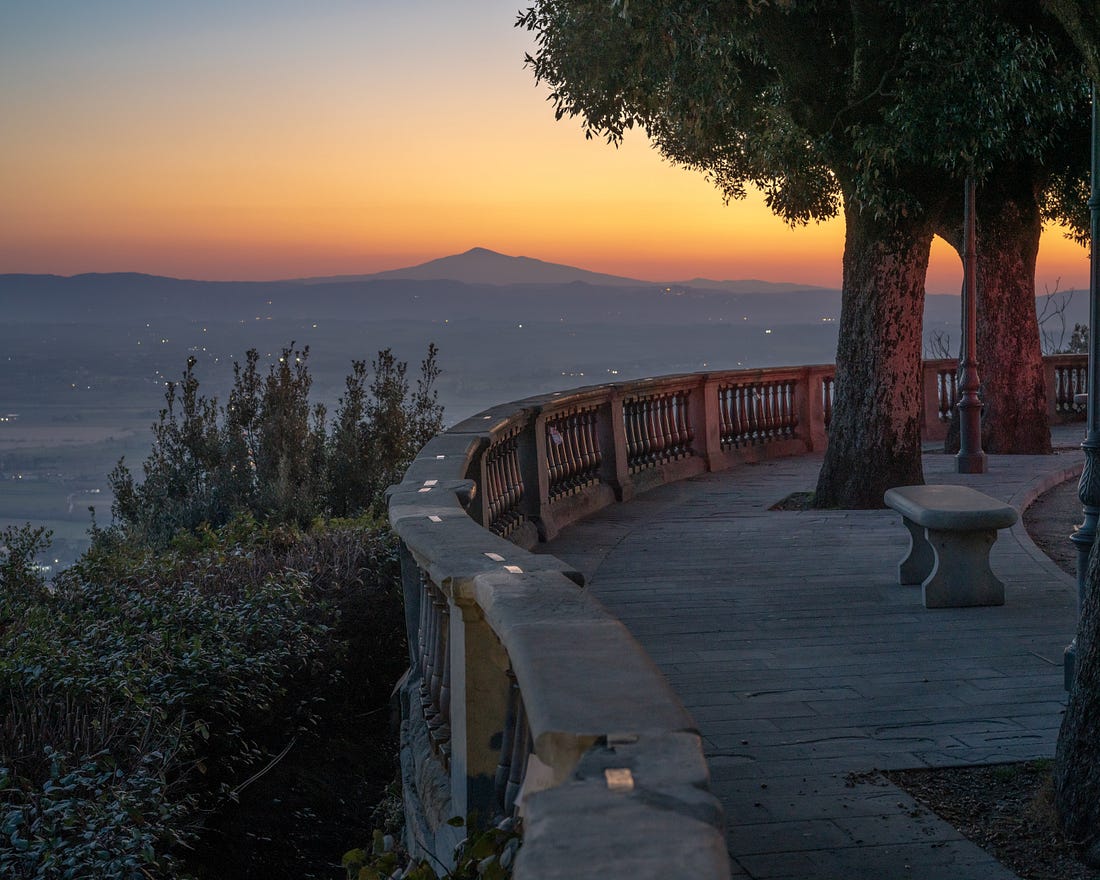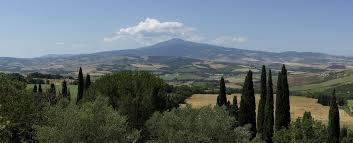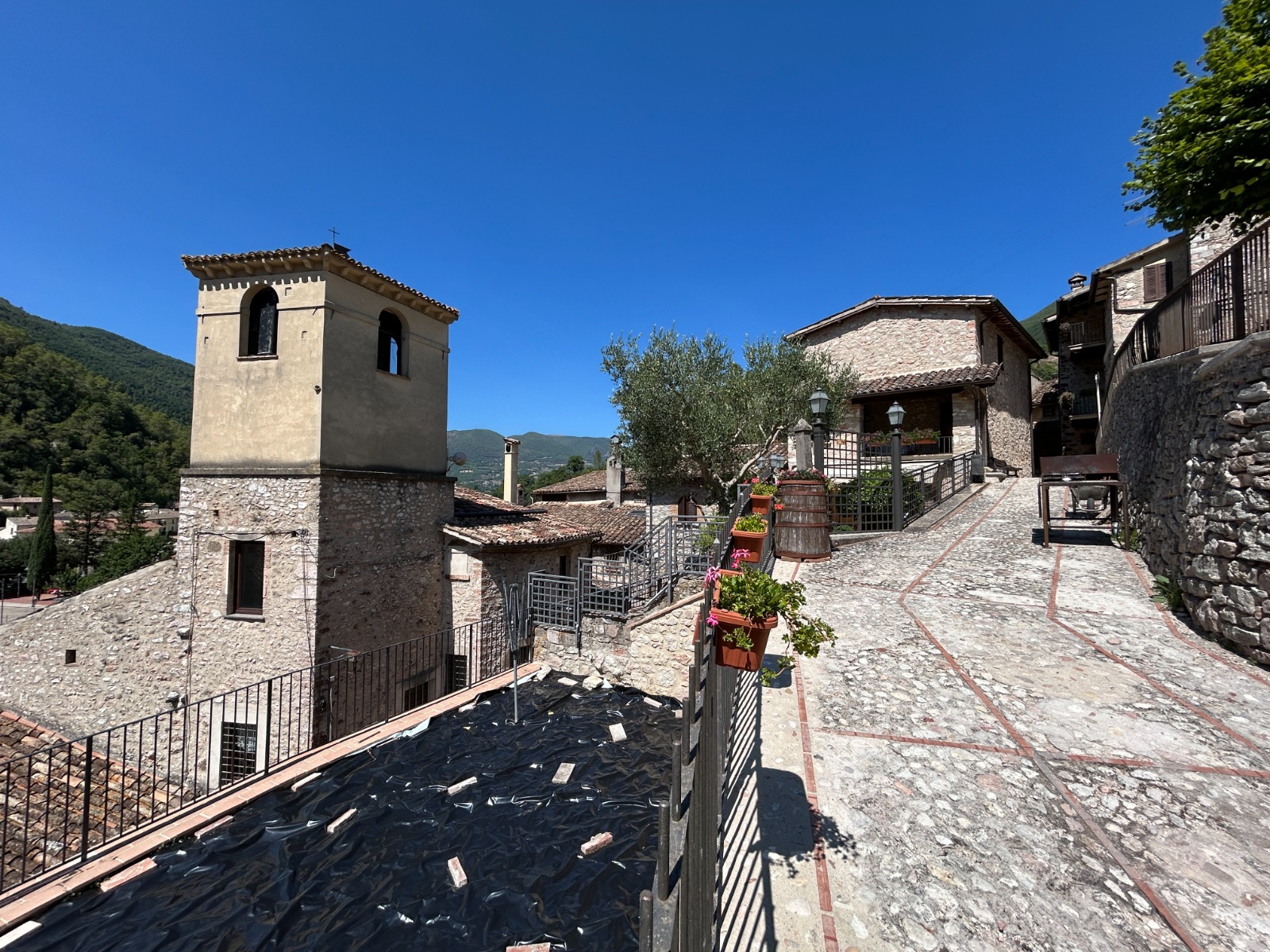The Church of Santa Margherita is situated above Cortona, almost at the
top of the hillside, just below the Medici Fortress (Fortezza Medicea), with spectacular, dominant views out over the
entire Valdichiana.
The church was originally the site of a small oratory, built by the
Camaldolese monks in the 11th century and dedicated to St Basil. This was
damaged in 1258 when Cortona was besieged by the Aretini and was rebuilt in 1288, under the direction of Margherita di
Cortona - a humble member of the third Order of Saint Francis - and re-dedicated
to St Basil, but also St Aegidius and St Catherine of Alexandria.
After Margherita’s death in 1297 the Cortonese built a large church
beside the oratory in her honour. It was completed in 1330. The neo-Gothic church of Santa Margherita that stands today, is the result of numerous interventions
and alterations carried out in 1738 and again between 1874-1897. Of the
original architectural structure only the large rose window of the façade
remains, along with the 17th century bell tower and the exterior walls of the
choir.


Margherita di Cortona, who is today the town’s patron saint, had a
somewhat tragic family history. Born in 1247 in Laviano near Perugia she became
motherless at the tender age of seven and acquired only a few years later a
step-mother who, it is said, had no love for her. She ran somewhat wild during her youth and at 17
purportedly fell in love with a local nobleman with whom she lived a rather
scandalous existence and to whom she bore a son. On her lover’s unfortunate demise, to all
accounts a murder, she renounced everything she owned - returning gifts bestowed
on her either to her lover’s family or the poor - and attempted to return to
her father’s household, but her efforts were thwarted by the unforgiving step-mother.
It was at this point she turned to the Friars Minor in Cortona and was
taken in, together with her son, by two kind ladies who later introduced her to
the Franciscans. She did many good works looking after the poor and in need,
especially the sick and began leading a life of penitence and prayer subsisting
on bread and vegetables and often fasting.
In 1277, after three years of probation, she was admitted to the Third
Order of Saint Francis and following the example of Francis of Assisi himself,
she begged for sustenance and bread. In these years it is alleged she carried
out severe acts of self-discipline in penance for her sins and spent much time
in prayer and contemplation, arriving at a sort of mystic plateau.
During the latter part of her life, she established a hospital for the sick,
homeless and impoverished, helped prisoners and penitents and became a
household name throughout Cortona for the good deeds and kindnesses she
dispensed.
In 1297, she died in a small back room of the oratory, where she had lived
out the last years of her life in silent communion and prayer. She was immediately referred to as a Saint,
but was not canonized until 1728.
Her remains now lie under the high altar of the church in a silver urn designed
in the 17th century by Pietro Berrettini (better known as Pietro da
Cortona). Above the altar hangs the 13th century Crucifix that is said to have
spoken to the saint. The marble sarcophagus depicting the saint in a sleeping
position, was completed, it is said, in 1362 by Angiolo and Francesco di
Pietro; two sculptors who were born in Cortona but who lived in Assisi.
The town pays homage to their patron saint on both the 22nd of February
the day of her recorded death and the 16th of May.







